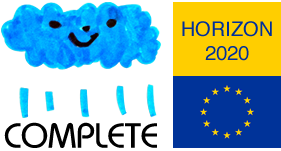In this interesting work, the large scale dynamics of warm atmospheric clouds are strongly coupled to small scale turbulence and droplet microphysics. The entrainment-mixing process is crucial in determining cloud evolution and is believed to foster spectral broadening and enhance droplet collision and coalescence. Temporal scales such as evaporation, phase relaxation, and reaction times have been widely used to parameterize the impact of turbulent mixing on cloud evolution. In this thesis, their role is investigated through a particle-resolved three-dimensional pseudospectral direct numerical simulation model. The evolution of the cloud-clear air interface at the cloud top is modeled as an initial value problem of decaying turbulence. Several numerical experiments were carried out over the same computational domain with different initial conditions. The model also considers solution and curvature effects, droplet collisions, temperature stratification, and vertical stability. Droplet and time scale statistics are computed by averaging over the planes parallel to the interface. The attempt to parameterize the spectral broadening as a function of both phase relaxation and eddy turnover times has not been successful. Polydisperse distributions exhibit a departure from the homogeneous mixing limit above the cloud top after a few elapsed eddy turnover times. Relatively high values for the evaporation time are found in regions close to the cloud core, whereas the saturation and phase relaxation times show higher values above the interface in the clear air slab. Estimates for the reaction time are in good agreement with such results. Evaporation, phase relaxation, and saturation times appear to be positively, negatively, and poorly correlated, respectively, with the homogeneous mixing degree across the interface.
Link: https://webthesis.biblio.polito.it/14748/1/tesi.pdf
